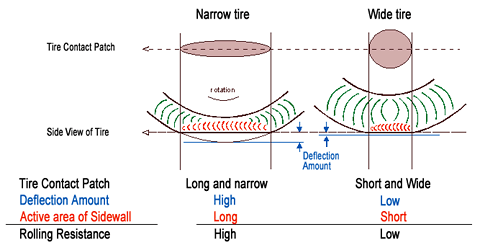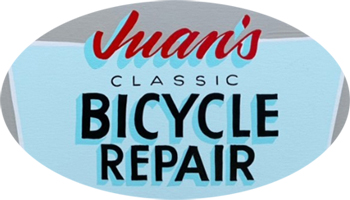There seems to be something fundamentally pleasing about knowing the simple fact that you can, and indeed may jump at the opportunity of taking your two wheeled adventure off the course of trajectory at any moment, for any given reason. It isn't that you always end up doing so, but the sheer fact that you can jump around in various ways gives rise to a satisfaction that leaves one feeling as if options a far less restricted. Though a bike with wider tires is very much a compromise in weight and sometimes speed, the compromise is more times than not entirely justifiable and healthy when the variables are weighed out. For most of us who don't race bikes and never will, the pro/con ratio seems to greatly gravitate toward the previous. Though the latter is very much a reality to varying degrees, it is often times more negligible than initially realized; at least this was the case for me.
Sifting through the rough
For the majority of the last century general consensus regarding tire width and overall speed has supported an inversely proportional correlation. The wider the tire, the slower the ride; simple. These ideas and claims have been generally accepted by the masses and spearheaded by big-box bike manufacturers to sell more (you guessed it) bicycles. Slightly lower coefficients of friction and aerodynamic drag (i.e. faster) will sell supposedly quicker bicycles as the winners of out favorite races solidify the notion that skinny tires will be faster and reign supreme. A massively fundamental problem here is that the big governing bodies of aforementioned races such as the one day classics and the grand tour stages races force contestants to operate with insanely tight parameters of what it is they constitute a road bike to be. With geometry being limited to particular wheelbase dimensions, tube angles and frame clearances, it is no wonder that we never see these racers doing what they do on tires with greater width.
Cyclocross racing is a very good example of this. Bikes that are very similar in geometry and build to road bikes are used with slightly larger tires (33mm being the width restriction) with knobs for extra traction in muddy, sandy, loose and wet conditions for the majority of all events. The bottom line here is that there is very little speculation left as to whether or not a wider tire (up to a certain width) will handle, grip and suspend better than it's narrow counterparts.
 |
| Tire width to volume ratios listed in ascending order from left to right |
Conversely, from about 2013-2015 we saw serious marketing hype that gravitated toward the opposite extreme end of the spectrum with tire widths (i.e. fat bikes). The claim with oversized fat tires is that one can "float" over just about anything in sight; there is indeed truth here but it comes at a huge cost. With extreme tire widths around the 4-5" mark, your tire can conform to just about any surface in sight. Extremely loose surfaces like sand and powdered snow are rendered negotiable with the footprint a fat bike creates. The problem with tire widths such as these is that the moment one enters road again (tarmac, gravel or even semi rough trail) the heavy weight, drag, and aerodynamic effect of such tires greatly outweighs the temporary benefit depending on the duration of the ride. Gauging your riding style is the key to honing in the middle ground that grants you the best of both narrow and wide tire options.
Finding diamonds
If riding clean road is your primary day-in day-out occurrence, it makes much more sense to use tires that teeter toward the narrower end of the spectrum. Depending on the load you haul, a 28-32c tire is a sensible option for most road bikes as both vintage and somewhat modern steel bikes will clear a tire around that size. For reasons mentioned above, most modern road bike tire clearances dictate a narrow width of 25mm. Unfortunately anything beyond these widths in such cases is simply a non-option.
By running the widest tires possible in your road bike you will gain a greater contact area for better handling, more air volume for greater pneumatic suspension and a wider footprint for conformity to road irregularities. For what you pay in the marginal weight gain (around 100 grams or so between tube and tire difference for a 23c vs 32c width) and the extremely marginal aerodynamic drag that incurs (think less than 1% here) you will gain a more comfortable and stable ride.
 | |||
| the differences between narrow and wide tire contact patches |
If you are working with something like an older touring or mountain bike frame, even wider tires are highly encouraged depending again on load and terrain. Supported findings have shown that dabbling beyond the 32c mark also shows marginal penalty for the added benefit. Something around the 42mm (1.75") is a very healthy, happy medium for riding that entails some gravel, crush refine, hard pack dirt or heavily inconsistent pavement.
Catering to your needs
At the end of the day what it all really boils down to is you paying attention to the kind of riding you are doing (or want to do for that matter) and setting up your rig accordingly. If you constantly find yourself riding on immaculately groomed pavement, width and tread is less of a concern as opposed to the varying terrain that composes much of suburbia and outer city fringes. Having experimented with most tire sizes commonly available, from the extra thin to extra thick, i have found that the additional bit of width has enabled me to comfortably ride in a longer, more comfortable and versatile fashion with less hesitation and concern. Ultra fat tires and super skinny tires both have their place, but the real question is figuring out what that means for you and your particular needs.
